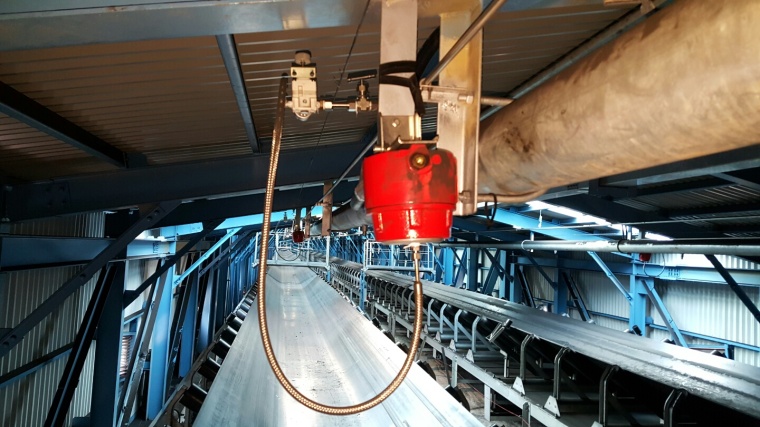Early Warning Fire Protection with Heat Sensors for Conveyor Applications
Many goods carried on conveyor systems are highly combustible with the power to ignite. Black and brown coal, biomass, industrial confetti, sulphur and recycling products are all examples of goods that can pose a fire risk during transportation. If they do ignite and the conveyor has no fire protection measures in place, then the fire can quickly spread to holding hoppers, blending, crushing or other processing areas of the plant to become a potentially major incident with catastrophic fire damage and substantial consequential losses. Transit sensors for heat detection are a good option in detecting fires in areas with sudden peaks of temperature can lead to explosions and deflagration.

Patol’s range of transit sensors continue to prove a popular option in detecting fires in a wide range of conveyor applications.
What is the Difference between an IR Heat Sensor and a Flame Sensor
The 5000 series features the infra-red transit heat sensor and the high temperature transit flame sensor.
The heat sensor: It offers an early warning system designed to trigger an alarm if the material being monitored exceeds a temperature of 100°C, (with the option to adjust the sensitivities to be set above this threshold). Importantly, the sensor triggers at temperatures below the point of flaming, including both embers and buried hot spots, thereby providing the potential for intervention before flaming occurs. The sensors can operate on conveyors running at speeds of 0.5 to 6 metres per second, analysing materials as they pass through its field of view. It would also be sensible to include linear heat detection cable for static heat or fire conditions.
The flame sensors: They trigger an alarm at a much higher temperature of 240°C, although as with the heat sensor, sensitivities can be set above this threshold depending on the nature of the application. The same conveyor speed of 0.5 to 6 metres can be accommodated, with the sensor triggering if a material reaches an ember or flame condition. Enhanced false alarm immunity is ensured through the sensor being ‘solar blind’ meaning the ‘background’ and ‘transient’ infra-red spectra are discriminated.
Other Kinds of Fire Detection
Several models are available in the 5000 series including specialist sensors with Atex certification for hazardous or dusty environments, which is also useful for mechanical protection in non-hazardous areas, plus glass-free, stainless-steel sensors designed specifically for food processing applications.
Patol has extensive experience in the design and manufacture of specialist fire detection products for industrial applications. In addition to its transit fire detection products, Patol offers other technologies including Firesense, ADW and Fibresense Line type Heat Detection Cable (LHDC), aspirating smoke detectors (ASD) and thermal imaging heat detection.











